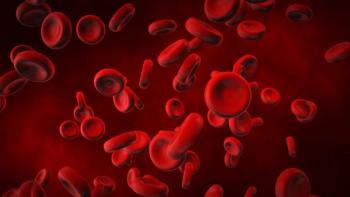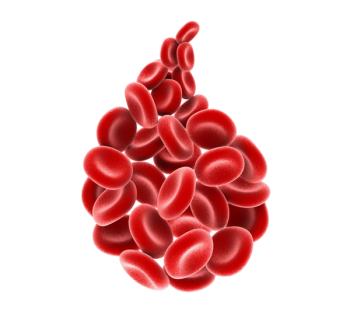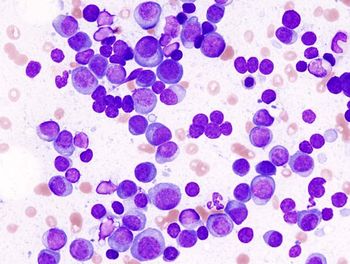
Pulsed Electric Field Ablation May Show Feasibility, Safety in Early NSCLC
Data from the INCITE-ES study show 100% technical success with pulsed electric field energy delivery before surgical resection.
Energy delivery via Aliya® pulsed electric field (PEF) ablation prior to surgical resection demonstrated feasibility and safety in a small cohort of patients with early-stage non–small cell lung cancer (NSCLC), according to findings from the INCITE-ES study (NCT04732520) published in the Journal of Surgical Oncology.1
Investigators delivered PEF energy to all 36 patients in the treatment group across the safety population, thereby achieving a 100% technical success rate. PEF ablation was safely given to all tumors in the treatment group, which included multiple lesions that abutted the pleural surface as well as a major fissure. Investigators completed these PEF procedures bronchoscopically in 72% of patients and percutaneously in 28% of patients.
No serious adverse effects (SAEs) were attributable to the PEF procedure via surgical resection, and no unanticipated AEs associated with the device occurred. Data showed 5 grade 1/2 AEs potentially related to the procedure, which included 2 cases of grade 1 pneumothorax. Use of PEF ablation did not interfere with any planned surgical procedures, as all patients successfully underwent resection.
Histopathological safety assessment showed no damage or alteration of sensitive structures that may have caused substantial clinical impact beyond standard tumor-related changes. In 2 tumors abutting the pleural surface, the cellular depletion zones showed well-developed fibrosis, although the pleural surfaces remained intact. CD20-positive B cell aggregates were identified as tertiary lymphoid structure formations, which exhibit features of secondary lymphoid organs that may potentiate a local immune response to promote immune activation against tumor cells.
“Aliya PEF ablation showed 100% technical success and integrated seamlessly into existing care pathways. By performing ablation and biopsy in a single anesthetic event, this study showed that Aliya PEF offered the ability to integrate Aliya into existing clinical workflows without requiring a second anesthetic event for early-stage NSCLC,” lead study author Marcelo Jimenez, MD, PhD, a professor of surgery in the Thoracic Surgery Department at Salamanca University Hospital in Spain, stated in a press release on these findings.2
Developers designed Aliya PEF ablation to make use of short-duration, high-voltage electric pulses to facilitate cancer cell death without damaging nearby structures such as airways, blood vessels, and the pleura. The procedure allows for percutaneous or endoscopic delivery, which may preserve the extracellular matrix.
Investigators of the INCITE-ES study enrolled 47 patients with suspected or confirmed early-stage NSCLC across 4 trial sites in Spain, the Netherlands, and Hong Kong. Overall, 36 patients underwent PEF ablation following diagnostic biopsy, and 8 who chose not to receive PEF energy had the biopsy procedure alone in the control group. Incomplete ablation was intentionally performed before surgery to enable direct comparisons between treated and untreated tumor tissue.
The trial’s primary safety analysis was the rate of SAEs from the time of PEF ablation to surgical resection that were related to the device and/or procedure. Other end points included changes to the surgical approach due to PEF, 30-day surgical mortality, 12-month overall survival, and surgical complications associated with PEF.
Patients 18 years or older with presence of solitary NSCLC nodules of stage IA2, IA3, or IB and high pre-procedure probability of malignancy per investigator evaluation were eligible for enrollment on the study.3 Other eligibility criteria included being a candidate for definitive lung tissue resection and having the ability to adhere to and undergo bronchoscopy, surgical procedure, and post-operative care.
“The study findings suggest that Aliya PEF could become a highly valuable tool, potentially for patients with tumors near sensitive structures where thermal techniques pose high risks,” Jimenez concluded.2
References
- Jimenez M, Flandes J, van der Heijden E, et al. Safety and feasibility of pulsed electric field ablation for early-stage non-small cell lung cancer prior to surgical resection. Journal of Surgical Oncology. Published online March 28, 2025. doi:10.1002/jso.28110
- New study published on the safety and feasibility of pulsed electric field ablation for early-stage non-small cell lung cancer prior to surgical resection. News release. Galvanize Therapeutics, Inc. May 20, 2025. Accessed May 20, 2025. https://tinyurl.com/bdfypyyh
- Feasibility study of the Aliya system in the treatment of early stage non-small cell lung cancer (INCITE ES). ClinicalTrials.gov. Updated July 19, 2024. Accessed May 20, 2025. https://tinyurl.com/yctvevzj
Newsletter
Stay up to date on recent advances in the multidisciplinary approach to cancer.

















































































